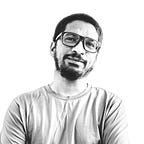A product designer is a key to your product’s success — not the designer who does only wireframes or visuals.
This post is not for the luxurious organisation folks.
Every organization has its own structural style, which depends on its product, the projects they do, and most importantly, what kind of financial situation they are in to hire and execute things. For everyone, when it comes to managing the design team, it’s a bit complicated. Unlike engineering, the design is always unstructured, and I believe that’s how it should be. If we start drawing boundaries and drafting rules, there will be no design. Well, it’s boon and bane. But, the current product industries struggle not because of that. It struggles because most designers, design leaders, and managers are stuck in the past and are just a bad influence on the upcoming designers, products, and customers. And most of the product leaders don’t have an option other than just listen to them because there’s a lack of design leaders to guide them.
“Stuck in the past?” — Yup, the hard truth
The design process, team structure, and skillset have not evolved much. For, e.g., there was a linear workflow processed by various design disciplines. There’s a problem that needs to solve or identified, which will be fed to the UX researchers. They will do the study and deliver all the data to the Interaction designers. They will do the architectural works and wireframes, which will be tested. Post that, it will be passed to the UI designers. Sometimes, more specialized graphic or visual design assistance would be needed. And, if required, they will test it again and finally deliver it to developers to engineer it. To complete this process, there are a lot of challenges. The team will be busy executing things, and all the product thinking is done by the Product Managers and the leadership. There’s not much of a role for designers to have a seat at the table. But now, things have changed.
Okay, what’s the scene now?
Businesses want to understand the customer and deliver the best customer experience to beat the competition. They need creative thinking and execution, not the sales or marketing folks. And it’s all handed over to the new-age designers, Product designers. They got to craft the experience and manage the product’s experience strategy and roadmaps. They share the table with the product leaders and executives. They should be able to disrupt, execute and engage when needed. And, it doesn’t mean they should possess all the skills. They need to be smart about it, and gather the knowledge of cross-functional teams and leadership.
Simply put, the product designers should understand the business requirements, do the research, draft the product roadmap collaborating with the stakeholders, and ensure it delivers a product that solves the customers’ and the businesses’ problems. Although the below graphic will give you a glance at your role, it might vary according to your team’s needs and strengths.
“As the importance of user experience and design deepens, product designers have to quell the inherent conflict and split their personalities into two equal but distinct halves — creators and managers” — THE KEN
The above is from the famous, THE KEN, titled ‘1 to 1000: The high-stakes hunt for India’s next top product designers’
It’s fun, not hard at all
I think this is when the full utilization of designers’ capability is being used. It’s time the designers have to step away from their comfort zones to receive the respect given. And the challenge here is the design schools have no clue what’s happening in the industry. The only way to learn is to read books, and current trends, connect with product people and learn. The product designers should be the storytellers of the product. You should be able to help the Product Managers and Engineers to build the right product at the right time. Now is the time when the designers can wear the ‘leader’ badge. Been there, it’s fun! A lot of teams have this kind of structure in place, and they are winning. And, to note, Apple has been doing this for a long time(not sure of current Tim’s regime).
“Your product’s story is its design, its features, images and videos, quotes from customers, tips from reviewers, conversations with support agents. It’s the sum of what people see and feel about this thing that you’ve created.” — Tony Fadell, creator of iPod
To Leaders, Product Designer — a costly brand?
To deliver a minimum story point product feature, you need minimum two-three different skill set designers. In reality, one Product designer can do the same thing. In fact, he/she can do more than that. To sum up, they are not costly; there’s a cost-optimization when you hire the right product designer. It’s a win-win.
To Comfort-Zone People
No one is stopping you if you want to call yourself a specialized designer and do just one thing. Of course, you will be the best in what you do, but the probability of survival will decrease as time passes with the new-age technologies and customer expectations.
I also witnessed when a few product folks talked about the industry reality, they get bombarded by so-called Linkedin Design Influencers — claiming it’s not fair, it’s rude, asking designers to do everything, blah blah! So, if you are a person reading this and being furious, crying doesn’t help anybody create kickass products and experiences. You got to empathize with your business leaders as well; you got to think like your CEO; try doing that.
I’m available!
If you are a budding product person who wants to be a product designer or a leader. I’m available for mentorship and would love to help you out to be creators and managers. Please feel free to ping me on Linkedin or email me.
